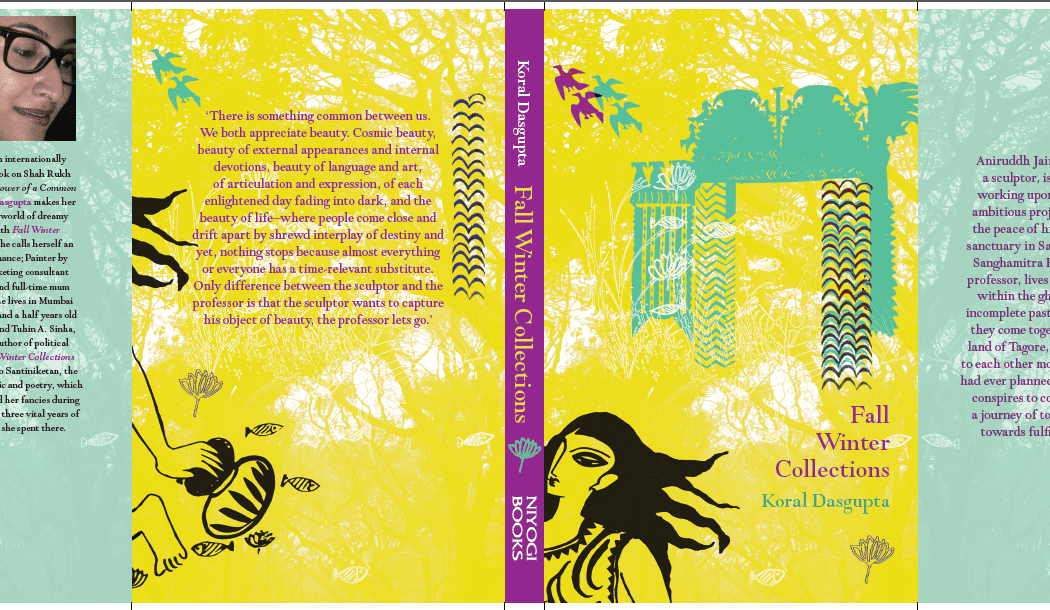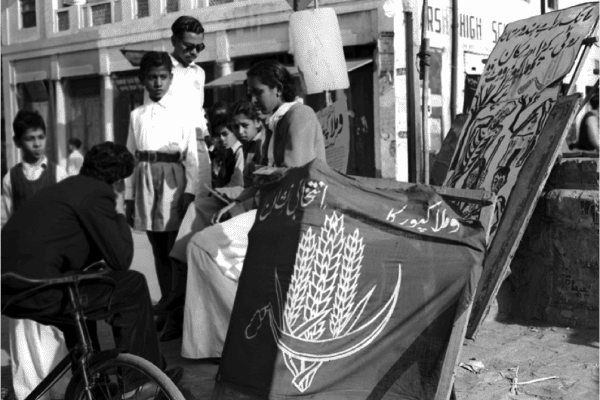Koral Dasgupta’s maiden venture in fiction is a tolerable, if slightly filmy, love story, but the land of Tagore deserves better treatment, says Moumita Ghosh.
Fall Winter Collections
Koral Dasgupta
Niyogi Books
Rs 395 | 235 pp
To begin from the end, Koral Dasgupta’s Fall Winter Collections draws to a close with our seemingly incompatible but equally wayward protagonists—the sculptor and the professor—ending up together. The tale preceding this union unfolds in the land of Tagore and basically chronicles the journey of the duo, across a stretch of one winter morning to another, through alternative monologues of the protagonists, Aniruddh and Sanghamitra.
Koral Dasgupta’s maiden venture into the realm of fiction writing, post Power of a Common Man, is a disappointment of sorts. The employment of monologues, despite promising to be an interesting approach to the tale, does not quite work in its favour, sounding hardly distinguishable in tone and character as they shift from the voice of the new sculptor in town to the native but aloof professor.
At times, the text stubbornly thrives on stereotypes, apart from suffering at the hands of the author’s obvious fondness for ellipsis and exclamation marks. Sample this: “Men here are just too calm, too thanda, too cold . . . lacking the vigour and vitality that essentially defines masculinity. No, I am not a man-hater, but here I do miss real men who challenge themselves and break barriers”.
The Bengali bhadralok, devoid of the north Indian brand of brawny, ambitious masculinity, being perceived in common discourse as too nyaka and laid back is one thing but for a character like Sanghamitra to seriously re-enforce this stereotype while propagating the construct of the categories of “real” (read hegemonic) and “not-so-real” masculinities is quite another.
The Bengali bhadralok, devoid of the north Indian brand of brawny, ambitious masculinity, being perceived in common discourse as too nyaka and laid back is one thing but for a character like Sanghamitra to seriously re-enforce this stereotype while speaking about the men at Santiniketan and propagating the construct of the categories of “real” (read hegemonic) and “not-so-real” masculinities is quite another.
Another problematic bit reads, “He must be thinking that I am loud, arrogant, mirror-cracking feminist; one of those who are desperate to prove that a man is always wrong and can take their opinions to any extent driven by an acute superiority complex!”
Moving on, the rest of the narrative reads rather fun and filmy, from Aniruddh striking a pose on his moolah motif (read a BMW) while waiting for Sanghamitra, “his eyes shaded by dark yellow Ray Ban, his fair skin shining in the evening sun”, to a boat ride on a full moon night for a date, replete with the sculptor’s recitation of Shelley’s poetry; from the sudden homecoming of a banished son to his aggrieved family featuring an “impromptu bhangra” performance of the entire clan to a kalboishaki (Nor’westers that occur in West Bengal during the month of April) afternoon when Aniruddh observes Sanghamitra’s “rendezvous with the first rains of the season” hiding behind a sal tree, only to later discover her past in the dog-eared love letters.
Another problematic bit reads, “He must be thinking that I am loud, arrogant, mirror-cracking feminist; one of those who are desperate to prove that a man is always wrong and can take their opinions to any extent driven by an acute superiority complex!”
What follows, renders a modern-day fairytale feel of sorts to the storyline, when after having made peace with his own family, the sculptor’s saviour instincts begin to kick in. However, he hardly seems satisfied to help out with mere balancing acts on uneven terrains or umbrella supplier in rough weathers; instead, he seems rather determined to rescue the damsel-in-distress, Sanghamitra, from the clutches of her “incomplete past”. How? By popping the question to the lady inside his BMW with an impressive timing of thunder, rain and swaying trees in the background—you get the drift.
The rescue act becomes even more pronounced when the narrative, almost instantly, shifts from the secluded land of Shantiniketan to the exuberant festivities of Durga Puja and Diwali across the cities of Kolkata and Jaipur. This is also where the families of the two protagonists come into the picture, and a very pretty one at that, and what follows is almost anyone’s guess. A grandiose display of camaraderie of the extended family, and some stolen kisses on the sly—typical of the ’90s family dramas on the big screen. Once, the narrative shifts back to where it originated, it becomes clear that as the sculptor prepares to leave Santiniketan, he shall take his bride-to-be along with him, away from her “self-imposed exile”, perhaps much to the dismay of the lady professor’s student-stalker.
All in all, Fall Winter Collections makes for a decent, one-time read—the noble attempt of talking about sculpture, the snippets about Calcutta as etched in the childhood memory of Sanghamitra and later on, the commentary of everyday life as known in the suburban town of Santiniketan are tolerable, but the land of Tagore deserved so much better.


